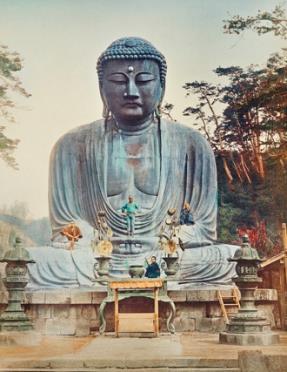
 The coronavirus pandemic in Japan has highlighted the differences between traditional and new religions and has also shown the strong hold that healing rituals still have in a secular society, according to a special report published in the Asia-Pacific Journal (May 1, 2020). Japan did not take the early precautions against the spread of the virus, but among the groups responding the earliest were new religious movements. Most such groups, such as Sokka Gakkai, shut their offices and decided to communicate with members remotely by mid-February, while traditional temples and other religious associations suspended their face-to-face activities in mid-March, writes Levi McLaughlin. The reason for the difference is that new religious movements, with a long history of controversy with the media and the government wanted to fend off any criticism about potentially spreading the virus, as was the case with a new religious movement in South Korea that received wide negative attention [see RW, vol. 35, no. 5]. Meanwhile, a widely heralded article in the New York Times reported that the Japanese new religion known as Happy Science claimed to have the cure for COVID-19 as well as persisting in its mass gatherings up until mid-March. That reinforced the stereotype of the “nefarious cults.”
The coronavirus pandemic in Japan has highlighted the differences between traditional and new religions and has also shown the strong hold that healing rituals still have in a secular society, according to a special report published in the Asia-Pacific Journal (May 1, 2020). Japan did not take the early precautions against the spread of the virus, but among the groups responding the earliest were new religious movements. Most such groups, such as Sokka Gakkai, shut their offices and decided to communicate with members remotely by mid-February, while traditional temples and other religious associations suspended their face-to-face activities in mid-March, writes Levi McLaughlin. The reason for the difference is that new religious movements, with a long history of controversy with the media and the government wanted to fend off any criticism about potentially spreading the virus, as was the case with a new religious movement in South Korea that received wide negative attention [see RW, vol. 35, no. 5]. Meanwhile, a widely heralded article in the New York Times reported that the Japanese new religion known as Happy Science claimed to have the cure for COVID-19 as well as persisting in its mass gatherings up until mid-March. That reinforced the stereotype of the “nefarious cults.”
In reality, McLaughlin writes, both traditional and new religions in Japan have offered spiritual rituals and remedies to stave off and cure the virus—from cleansing rituals to meditation techniques. Japan is considered a secular society, with the “vast majority [relying] on data-driven scientific understandings of the coronavirus epidemic to guide their actions and to seek treatment, but aid from kami [deities] and buddhas for deliverance from pestilence still holds appeal.” He adds that like other societies, most religions in Japan have gone online, though these cyber-services and rituals are mainly arranged by local activists rather than religious leaders and denominations. A wide range of ritual activities have proved adaptable to online usage; even such a tradition as Shugendo, which is based on initiations and pilgrimage, have used Zoom and Facebook to conduct rituals and training [although the global Sokka Gakkai has had a weak Internet presence, preferring phone calls and letters for communication]. McLaughlin concludes that the main motivator for religious professionals to move their services online is fear of losing income. This is especially the case for temple priests who rely on contributions rather than salaries. The closing or reducing of community-related activities, particularly funerals, from which donations are drawn has resulted in serious losses of income. A bill to have priests included in unemployment and stimulus payments will face constitutional hurdles against government funding religion.
(Asia-Pacific Journal; https://apjjf.org/2020/9/McLaughlin.html?)